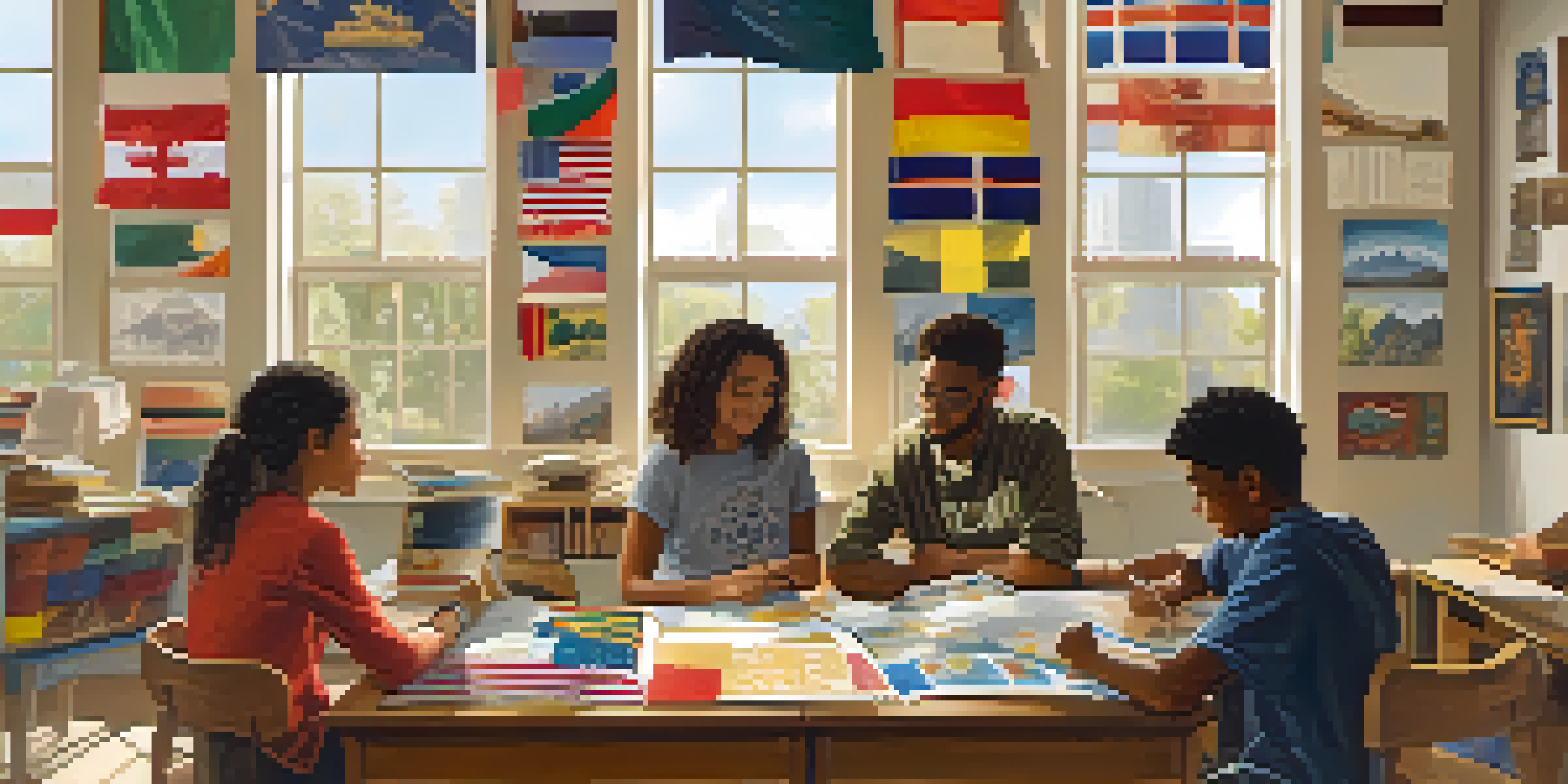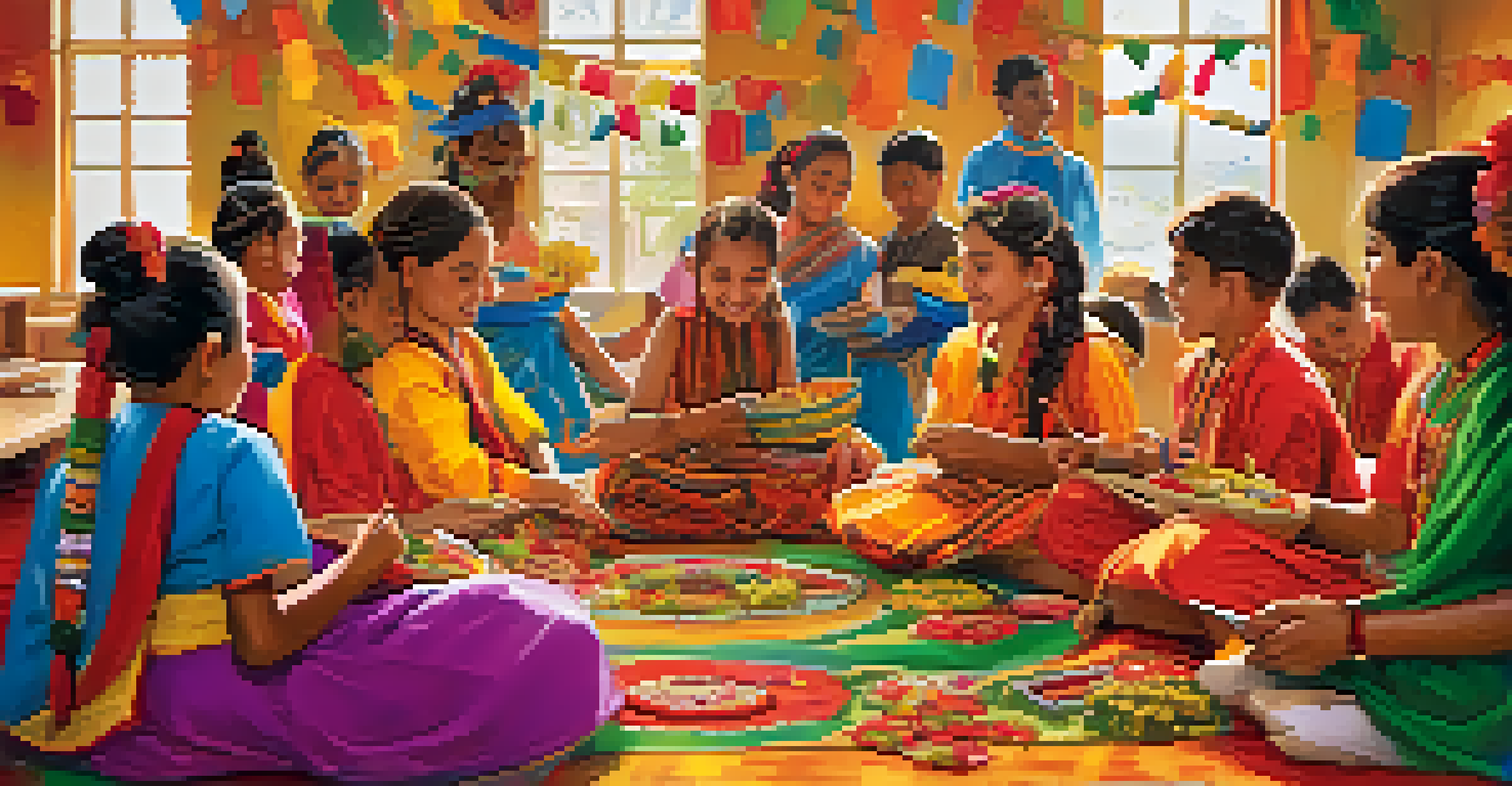Building Relationships with Students from Different Cultures

Understanding Cultural Differences Enhances Engagement
To effectively connect with students from diverse cultures, it's essential to understand their backgrounds. Each culture has its own norms, values, and communication styles, which can influence how students interact in the classroom. By taking the time to learn about these differences, educators can create a more inclusive environment that respects and celebrates diversity.
Diversity is being invited to the party; inclusion is being asked to dance.
For instance, in some cultures, direct eye contact may be considered disrespectful, while in others, it's a sign of honesty and engagement. Recognizing these nuances helps teachers avoid misunderstandings and fosters a respectful atmosphere. This understanding can be a bridge to stronger relationships, making students feel seen and valued.
Moreover, actively engaging with students about their cultural identities can spark meaningful conversations. By inviting them to share their experiences, educators can not only learn but also create a sense of belonging. This dialogue encourages students to open up, enriching the classroom experience for everyone.
Creating an Inclusive Classroom Environment
An inclusive classroom goes beyond mere tolerance of differences; it embraces them. When students see their cultures represented in the curriculum and classroom decor, it sends a powerful message: 'You belong here.' This can be achieved by incorporating diverse perspectives in lessons and celebrating various cultural holidays.

For example, a history lesson that includes contributions from various cultures can help students from those backgrounds feel acknowledged. Additionally, using culturally relevant materials can make learning more relatable for all students. This practice not only engages diverse learners but also enriches the educational experience for everyone in the room.
Embrace Cultural Diversity
Understanding and celebrating cultural differences fosters an inclusive classroom environment where all students feel valued.
Creating inclusive spaces also means being mindful of language and communication styles. Encouraging students to express themselves in ways that feel comfortable to them, whether through verbal discussions, art, or writing, fosters creativity and confidence. This flexibility helps students from different cultures thrive and contributes to a positive learning atmosphere.
Building Trust Through Open Communication
Trust is the cornerstone of any strong relationship, especially in a diverse classroom. Establishing open lines of communication helps students feel safe expressing their thoughts and feelings. This can be as simple as regularly checking in with students and encouraging them to share their views without fear of judgment.
The beauty of the world lies in the diversity of its people.
In practice, this might look like holding regular one-on-one meetings with students to discuss their progress and any challenges they face. By actively listening and responding with empathy, educators can demonstrate that they value each student's unique perspective. This approach not only builds trust but also encourages students to engage more deeply with their learning.
Additionally, using feedback as a tool for growth can help students feel more connected. When they see their input shaping classroom practices or discussions, it reinforces their importance within the learning community. This two-way communication enhances relationships and promotes a collaborative learning environment.
Encouraging Peer Relationships Across Cultures
Fostering peer relationships among students from different cultures can enhance social learning. Group projects or collaborative activities that mix students from various backgrounds encourage them to work together and learn from one another. This not only builds friendships but also promotes a greater understanding of different perspectives.
For instance, assigning students to work in diverse groups on a project can lead to rich discussions and innovative ideas. As they navigate their differences, they develop essential social skills such as empathy and teamwork. These experiences prepare students for a multicultural world beyond the classroom.
Open Communication Builds Trust
Establishing open lines of communication encourages students to express themselves freely, enhancing trust and engagement.
Moreover, implementing structured activities that require students to share their cultural traditions can deepen connections. This not only enriches their understanding of one another but also creates a sense of community. When students learn about each other's backgrounds, they often find common ground, which is the foundation of lasting friendships.
Utilizing Cultural Celebrations as Learning Opportunities
Cultural celebrations provide a fantastic opportunity to build relationships in the classroom. By recognizing and participating in various cultural events, educators can create a vibrant atmosphere that honors diversity. These celebrations can range from Diwali to Lunar New Year, each offering unique insights into different cultures.
Involving students in planning and sharing their cultural celebrations can empower them and foster pride in their heritage. This not only enhances their engagement but also allows them to take ownership of their learning environment. When students feel valued during these celebrations, it strengthens their connection to the classroom and their peers.
Additionally, these events can serve as a platform for education and dialogue. Inviting families to share their traditions can create a bridge between home and school, enriching the learning experience for everyone involved. This collaborative approach deepens relationships and creates a more cohesive classroom community.
Adaptability: The Key to Connecting with Diverse Students
Adapting teaching styles to meet the needs of diverse learners is crucial in building strong relationships. Every student comes with their unique learning preferences shaped by cultural experiences. By being flexible and willing to modify approaches, educators can create a more supportive learning environment.
For example, some students may thrive in hands-on activities, while others excel in discussions or written assignments. By offering a variety of learning modalities, teachers can cater to different strengths and ensure that all students feel included. This adaptability not only helps in academic achievement but also fosters a sense of belonging.
Adapt Teaching Styles for Inclusion
Adapting teaching methods to accommodate diverse learning preferences ensures all students can thrive academically and socially.
Moreover, educators should remain open to feedback from students regarding their learning experiences. If a student expresses that a certain method isn’t resonating with them, being willing to change course shows that their opinion matters. This responsiveness builds trust and demonstrates a commitment to meeting the diverse needs of all students.
Reflecting on Personal Biases to Enhance Relationships
Self-reflection is a vital part of building relationships with students from different cultures. Educators must consider their own biases and preconceived notions to create a truly inclusive learning environment. Acknowledging these biases helps in identifying areas for personal growth, which ultimately benefits the students.
For instance, if a teacher recognizes a tendency to favor certain cultural narratives, they can make a conscious effort to include diverse perspectives in their teaching. This reflection not only enhances the educator's effectiveness but also sets an example for students, encouraging them to be more open-minded and accepting of differences.

Additionally, engaging in professional development focused on cultural competency can provide valuable insights. Workshops and training can equip educators with tools to navigate cultural complexities and build stronger relationships with students. This ongoing learning journey creates a ripple effect, positively impacting the entire classroom environment.